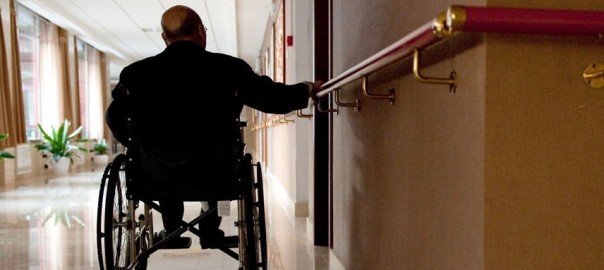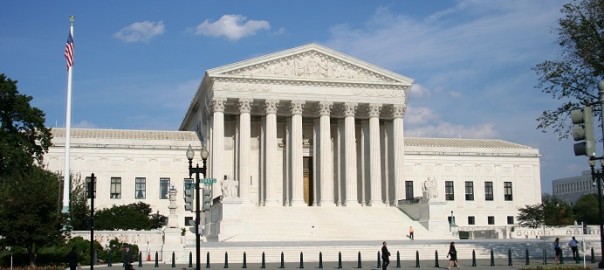The recent legislative moves have presented a huge opportunity for private and foreign investors to enter into the senior care market in China, which has long been dominated by publicly-run institutions, yet is significantly underfunded and has shown an urgent demand for viable business model and well-trained senior care professionals[1]. To address the issue of fast aging society of China, the Chinese government lately amplified its voice for invitation and calling for private sector participation and foreign investment in senior care industry, by introducing a series of more detailed supportive measures and policies in favour of private and foreign investment in senior care sector, in response to the State Council’s earlier guiding requirements to speed up the senior care industry in September 2013[2]. These measures and policies not only provide clarification on how to establish foreign invested for-profit senior care institutions, but also ease the lingering difficulty in land acquisition and financing, and create more appealing financial incentives to private and foreign investors with an attempt to invest in the sector. The measures are intended to clear the hurdles standing in the way of private and foreign investment in senior care industry so as to boost the investment in the industry in China.
Clarification on Procedures
Currently there is no express restriction on the form of entities that private and foreign investors may set up in China to afford senior care services. For-profit senior care institutions or non-profit institutions, joint venture or wholly foreign owned enterprise, are all permitted. However, there had been no detailed measures on specific procedures for foreign investment in this industry. On 24 November 2014, the Ministry of Commerce (“MOFCOM”) and the Ministry of Civil Affairs (“MCA”) jointly released the “Public Announcement on Relevant Issues on Foreign Investment in For-profit Senior Care Institutions” (“Public Announcement”), which clarifies on the requirements and procedures to establish foreign invested for-profit senior care institutions and sets a twenty-day timeframe for the approval process at local branch of MOFCOM. It is worth highlighting that foreign investors are allowed to obtain the business licence before they apply to MCA for the Permit on Establishment of Senior Care Institutions, a requisite permit to do business as a senior care institution (e.g. home for the aged).
Moreover, foreign investors are also encouraged to participate in the privation and restructuring of the publicly-run senior care institutions and develop the franchise in the country.
Elevated Priority in Land Supply to Senior Care Industry
Despite China has encouraged foreign investment in senior care industry as early as 2002, it proved to be no more than dead letters in the law. It was not until 2011 that the first foreign invested company in this sector was established[3]. This owes very much to the practical difficulty in acquisition of land for senior care facilities by private or foreign investors. Previously, in China, private or foreign enterprises in senior care industry have to secure the land use right of a piece of land from the government by a public bidding process[4], which not only means the highest bidding price but also in practice “a nearly impossible land acquisition process”, as remarked by Bromme Cole, a managing partner at Hampton Hoerter, a health care services company in Asia[5].
On 17 April 2014, the Ministry of Land and Resources issued the “Guidelines on Use of Land for Senior Care Facilities” (“Guidelines”), which made several improvements in terms of how private and foreign investors may acquire land for senior care services:
- First, the land for senior care industry has been incorporated into the system of land planning and it has gained higher priority in land supply.
- In the process of invitation for tender, auction and listing for land to be used for senior care, the government may not impose requirements in respect of qualifications on bidders, nor may the government impose limitation on level of creditworthiness on senior care institutions to be established.
- For the purpose of encouraging non-profit senior care institutions, the government offers various ways for enterprises to acquire the land. In addition to the traditional land acquisition by invitation for tender, auction and listing, the investors may also
- acquire the land by allocation[6] without going through the tender, auction and listing; or
- use the land collectively owned by peasants[7].
Furthermore, In the scenario (a) above, non-profit senior care institutions are allowed to be changed into for-profit senior care institutions later, under which circumstances the allocated land such an institution has obtained can be changed into granted land by way of agreement with local government and paying the land grant premiums. The land grant premiums are required to be set on the basis of the market price and no less than the minimum land price of the region published by the local government[8], yet no public bidding process is required for the land during such transition.
Although these measures remain to be tested in practice, they indeed indicate more likelihood for private and foreign investors to acquire the land for senior care industry and also increase the diversity in manners of land acquisition.
Financial Incentives and Benefits
The underdevelopment of a market is, more often than not, attributable to some extent to the difficulty in financing in this sector. This is also the case to the senior care market in China. To change the situation, the government adopted many measures to facilitate the financing in senior care industry, but the most striking is the permission of mortgage to be created on the land acquired by leasing for senior care purposes, which apparently breaks through the old rules and offers a brand-new source of financing to investors, especially those in senior care industry.
Moreover, the government lends more financial incentives to these investors by reductions and exemption of taxes and fees and by provision of subsidies. First, it was expressly stipulated that the senior care institutions, for-profit ones and non-profit ones, may enjoy exemption from business taxes that would otherwise be levied on care services. Even more remarkable are the exemption from real estate taxes and urban land-use taxes for all non-profit senior care institutions, and exemption from income taxes for qualified non-profit senior care institutions. As to the administrative charges, the construction of for-profit senior care and medical institutions may be granted 50% reduction of such fees while the construction of non-profit ones may be given full exemption from the same. In addition, some of local governments (e.g. Beijing) have also decided to pay subsidies from local financial budgets to senior care institutions, for-profit or non-profit.
Conclusion
Top-level Chinese government has made great efforts to pave the way for private and foreign investors to step into the senior care industry of China. To this end, a wide variety of supportive rules and regulations are successively issued, ranging from incorporation procedures to land acquisition, from financing tools to tax exemption. Despite some implementation rules have not been issued, it is foreseeable the legal environment for private and foreign investors in the senior care industry of China will become more favourable.
[1] Sovereign China, “Foreigner Piety China’s Aging Population Creates Opportunities in Senior Care for Foreign Investors”, 1/2014, Business Journal of the German Chamber of Commerce in China, available at http://www.jljgroup.com/uploads/JLJ%20Articles/Senior_Care%20German_Chamber_of_Commerce_Ticker_magazine_Feb_March_2014.pdf as of 12 February 2015.
[2] “State Council’s Various Opinions on Development of Senior Care Industry” issued by the State Council on 6 September 2013.
[3] The first foreign investor that established the foreign invested company in senior care industry in China is Cascade Healthcare. Alyssa Gerace for ALFA Update, “Senior Living in China: Big Barriers, Bigger Opportunity”, available at http://www.alfa.org/News/2358/Senior-Living-in-China%3A-Big-Barriers,-Bigger-Opportunity as of 12 February 2015.
[4] Under the current PRC law, the land is either state-owned land (“Guoyoutudi”) or land owned by rural collective economic organization (“Jititudi”). That being said, China has developed the concept of “land use right” (“Tudishiyongquan”) to effect the transfer of land between state-owned or private entities. Accordingly, the government on behalf of the state may allocate (“Huabo”) the land use right of a land lot to enterprises for zero consideration or grant (“Churang”) the land use right for the consideration of land grant premiums. The land used for profit-oriented purposes, such as retail, travel, office, industrial, residential, finance, entertainment and etc. shall be supplied in the form of land grant through a public bidding process (i.e. invitation for tender, auction and listing).
[5] ibid [3].
[6] ibid [4].
[7] ibid [4].
[8] This is pursuant to the “Regulation on Transfer of Land Use Right of State-owned Land by Agreement” issued by the Ministry of Land and Resources on 6 November 2013.










